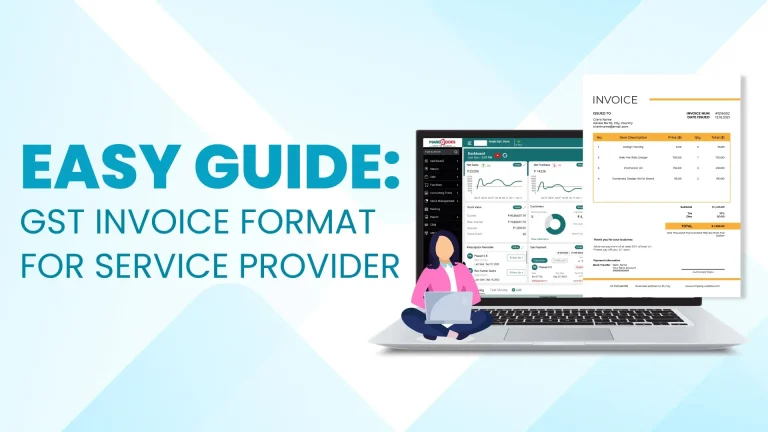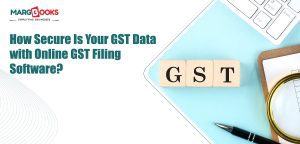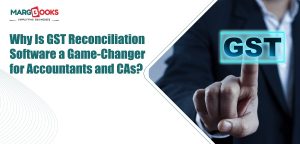In the world of taxes and business in India, the Goods and Services Tax (GST) is super important. It changed how taxes work by putting lots of different taxes under one roof, making things simpler and making sure everyone follows the rules better. For service providers, making sure they use the right GST invoice format is really important for keeping things running smoothly and following the rules. In this big guide, we’re going to talk about all the details of the GST invoice format for service provider that service providers need to know.
Understanding the GST Invoice:
Before we dive into the details, let’s understand what a GST invoice is. An invoice is like a receipt that a seller gives to a buyer, showing what was bought and how much tax was paid. It’s an important piece of paper for both the seller and the buyer, and it helps make sure everyone knows what’s happening in the transaction.
What Goes into a GST Invoice:
A GST invoice for service providers has a bunch of important parts, and each one is really important for following the rules and making sure everything is clear in a transaction. Here’s a look at what those parts are:
- Invoice Number and Date: Every invoice needs a special number and the date it was made. This helps keep track of transactions and makes it easy to find them later if needed.
- Supplier’s Details: The invoice has to show who the seller is, including their name, address, GSTIN (which is a special tax number), and how to contact them. This helps everyone know who they’re dealing with and keeps things clear.
- Recipient’s Details: Just like the seller’s info, the invoice also needs to show who the buyer is, with their name, address, and GSTIN. This is important so the buyer can claim back any tax they paid.
- Description of Services: The invoice should explain in detail what services were provided, how many, and how much they cost.
- Taxable Value and GST Rate: The invoice needs to show how much the services cost and how much tax is being charged on them. This makes it clear for everyone involved.
- Applicable Taxes: The invoice has to break down all the different taxes being charged, like CGST, SGST, IGST, and any extra fees if needed.
- Total Amount Payable: This is the total amount the buyer has to pay, including all the taxes. It makes it easy to see how much everything costs altogether.
- Payment Terms: If there are any special terms for payment, like when it’s due or how to pay, those need to be mentioned on the invoice.
- Signature or Digital Signature: Finally, the invoice needs to be signed by someone from the seller’s side to show it’s legit.
Why Following the Rules Matters:
It’s really important to use the right GST invoice format for service provider for a few reasons:
- Claiming Tax Back: If a service provider wants to get back the tax they paid on stuff they bought, they need to have a proper invoice. If not, they might not get that money back.
- Staying Legal: Using the right kind of invoice helps service providers follow the law. If they don’t, they could get in trouble and have to pay fines.
- Being Clear and Honest: A good invoice makes sure everyone knows what’s happening in a transaction, which helps avoid arguments or confusion later on.
- Making Audits Easier: If tax people come to check a service provider’s books, having the right invoices makes it easier for them to see if everything is okay.
Common Mistakes to Avoid:
Even though it’s important, service providers sometimes make mistakes with their invoices. Here are a few common ones to watch out for:
- Wrong GSTIN: Giving the wrong tax number can mess things up and cause problems later.
- Not Describing Services Clearly: If the invoice doesn’t explain what was done clearly, it can lead to confusion.
- Mixing Up Tax Rates: Getting the tax rate wrong can cause mistakes in how much tax is owed.
- Forgetting Signatures: If the invoice isn’t signed properly, it might not be accepted as valid.
GST Invoice Format for Service Provider
Here’s a template for a GST (Goods and Services Tax) invoice for a service provider:
| [Your Company Name] | ||||
|---|---|---|---|---|
| [Your Company Address] | ||||
| [City, State, ZIP Code] | ||||
| [Your GSTIN (Goods and Services Tax Identification Number)] | Date: [Date of Invoice] | |||
| Recipient: | ||||
| [Client’s Name] | ||||
| [Client’s Address] | ||||
| [City, State, ZIP Code] | ||||
| [Client’s GSTIN (Goods and Services Tax Identification Number), if applicable] | ||||
| Sr. No. | Description of Service | Quantity | Rate | Amount (INR) |
| 1. | [Description of Service 1] | [Quantity] | [Rate] | [Amount] |
| 2. | [Description of Service 2] | [Quantity] | [Rate] | [Amount] |
| Subtotal: | [Subtotal] | |||
| CGST (Central GST) @ [CGST Rate]: | [CGST Amount] | |||
| SGST (State GST) @ [SGST Rate]: | [SGST Amount] | |||
| IGST (Integrated GST) @ [IGST Rate]: | [IGST Amount] | |||
| Total: | [Total Amount] | |||
| Amount in Words: Rupees [Amount in Words] | ||||
| Payment Terms: [Payment Terms, e.g., Due Upon Receipt] | ||||
| Bank Details: [Your Bank Name] [Your Bank Account Number] [Your Bank IFSC Code] |
||||
| Thank you for your business! | ||||
Make sure to replace the placeholder texts like [Your Company Name], [Description of Service], [Rate], [Quantity], [Subtotal], [CGST Rate], [SGST Rate], [IGST Rate], [Total Amount], [Amount in Words], etc., with your actual information and figures.
Also, ensure that you calculate the CGST, SGST, and IGST amounts correctly based on the applicable rates and regulations in your region.
Integration with Invoicing Software:
Many service providers use online invoicing software to streamline their invoicing process. These software solutions often come equipped with features tailored to GST compliance, making it easier for service providers to generate accurate invoices quickly. These systems typically automate calculations for taxes, generate unique invoice numbers, and store invoice data securely for future reference. Integration with accounting software further enhances efficiency by seamlessly recording transactions and facilitating reconciliation processes. By leveraging invoicing software, service providers can reduce manual errors, improve productivity, and ensure compliance with GST regulations.
Adapting to Changes in GST Rules:
The GST landscape is dynamic, with periodic updates and amendments to the tax laws. Service providers must stay informed about these changes and adapt their invoicing practices accordingly. For instance, changes in tax rates or the introduction of new compliance requirements may necessitate adjustments to the invoice format or software settings. Regular training and awareness programs can help service providers stay abreast of regulatory changes and ensure compliance. Additionally, engaging with tax consultants or seeking guidance from industry associations can provide valuable insights into navigating complex GST scenarios and mitigating compliance risks.
Incorporating E-Invoicing:
With the aim of enhancing transparency and reducing tax evasion, the Indian government has introduced the concept of electronic invoicing (e-invoicing) for certain businesses. Under the e-invoicing system, invoices are electronically generated, authenticated, and registered on a central portal maintained by the GST Network (GSTN). While currently applicable to businesses meeting specified turnover thresholds, e-invoicing is expected to be gradually expanded to include more businesses. Service providers should familiarize themselves with the requirements and procedures for e-invoicing to ensure seamless compliance with regulatory mandates and leverage the benefits of digitalization.
Best Practices for GST Invoicing:
In addition to understanding the technical aspects of GST invoicing, service providers can adopt certain best practices to optimize their invoicing processes and enhance compliance:
- Regular Review and Documentation: Service providers should periodically review their invoicing practices and maintain detailed documentation of all invoices issued and received. This ensures transparency and facilitates audits or inspections by tax authorities.
- Training and Education: Investing in training programs for staff members involved in invoicing can help enhance their understanding of GST regulations and foster compliance. Training sessions should cover topics such as invoice preparation, GST rates, input tax credit, and record-keeping requirements.
- Automation and Digitalization: Leveraging technology solutions such as invoicing software, accounting software, and e-invoicing platforms can streamline invoicing processes, minimize errors, and improve efficiency. Service providers should explore opportunities to automate repetitive tasks and embrace digital solutions for enhanced productivity.
- Timely Reconciliation: Service providers should reconcile their invoices regularly with their accounting records to ensure accuracy and identify any discrepancies. Timely reconciliation helps in detecting errors or omissions and facilitates corrective action before they escalate into compliance issues.
- Engagement with Tax Experts: Seeking guidance from tax experts or consultants can provide valuable insights into complex GST issues and help service providers navigate regulatory requirements effectively. Tax experts can offer strategic advice, assist in interpreting tax laws, and provide support during audits or inquiries.
By adopting these best practices and staying proactive in their approach to GST invoicing, service providers can not only ensure compliance with regulatory requirements but also optimize their invoicing processes for greater efficiency and accuracy. Embracing technology, staying informed about regulatory changes, and fostering a culture of compliance are essential pillars of success in the evolving landscape of GST invoicing.
Also Read:
- How Secure is Your GST Data with Online GST Filing Software?The adoption of GST filing software has become a pivotal part of the business ecosystem in India. With the introduction of the Goods and Services Tax (GST), businesses have had… Read more: How Secure is Your GST Data with Online GST Filing Software?
- Why is GST Reconciliation Software a Game-Changer for Accountants and CAs?Managing finances and adhering to tax regulations can often become a daunting task, especially for accountants and Chartered Accountants (CAs) in India. One of the biggest challenges they face is… Read more: Why is GST Reconciliation Software a Game-Changer for Accountants and CAs?
- What Details Must be Included in a Sale Bill with GST?Getting your GST paperwork wrong feels like walking through a minefield, doesn’t it? One missing detail on your invoices, and suddenly you’re dealing with compliance headaches that could’ve been easily… Read more: What Details Must be Included in a Sale Bill with GST?
- How Is a Purchase Bill with GST Different from a Sales Invoice?Running a business in today’s GST-enabled economy requires more than just selling and buying. It’s about being organised, compliant, and aware of what each document in your billing system stands… Read more: How Is a Purchase Bill with GST Different from a Sales Invoice?
Frequently Asked Questions
What is a GST invoice?
A GST invoice is a document that provides a detailed record of the services rendered by a service provider along with the taxes charged under the Goods and Services Tax (GST) regime in India. It serves as evidence of a transaction between the supplier and the recipient, documenting the nature of the services provided, the corresponding tax liabilities, and other essential details required for compliance and transparency.
Why is a GST invoice important?
A GST invoice holds significant importance for both the supplier and the recipient for several reasons. Firstly, it facilitates the seamless claiming of input tax credit (ITC) for the recipient, enabling them to offset the taxes paid on inputs or input services against their tax liabilities. Additionally, it serves as a legal document that ensures compliance with GST laws and regulations, providing clarity and transparency in business transactions. Moreover, a properly issued GST invoice helps in maintaining accurate financial records, facilitating audits, and resolving disputes effectively.
What information should a GST invoice include?
A GST invoice should contain essential details such as the supplier’s name, address, and GST identification number (GSTIN), as well as similar information for the recipient. It should also include a description of the services provided, the quantity (if applicable), the taxable value, the applicable GST rate, and the total amount payable. Additionally, it should specify the invoice number, date of issue, payment terms, and any other relevant terms and conditions agreed upon by the parties involved.
What happens if I make mistakes on my GST invoice?
Errors or mistakes on a GST invoice can have various repercussions, including compliance issues, denial of input tax credit (ITC), and potential penalties. It is crucial to ensure the accuracy and completeness of the information provided on the invoice to avoid such consequences. In case of errors, a revised invoice can be issued to rectify the mistake, provided proper documentation and adherence to regulatory guidelines are followed.
Do I need a separate invoice for each service provided?
Yes, it is advisable to issue a separate invoice for each distinct service provided to ensure clarity, transparency, and compliance with GST regulations. Each invoice should accurately reflect the details of the specific service rendered, including the description, quantity (if applicable), taxable value, and applicable taxes, enabling proper documentation and accounting for tax purposes.
Can I use software for generating GST invoices?
Yes, employing invoicing software can streamline the process of generating GST-compliant invoices for service providers. These software solutions often come equipped with features tailored to GST compliance, such as automated tax calculations, invoice numbering, and template customization. By leveraging invoicing software, service providers can improve efficiency, reduce manual errors, and ensure adherence to regulatory requirements in invoicing practices.
Do I need to include my GSTIN on the invoice?
Yes, it is mandatory to include the Goods and Services Tax Identification Number (GSTIN) of both the supplier and the recipient on the GST invoice. This ensures proper documentation and tax compliance, enabling the recipient to claim input tax credit (ITC) and facilitating the verification of transactions by tax authorities. Omission of GSTIN may result in non-compliance and potential penalties under GST laws.
How long should I keep GST invoices for?
Service providers are advised to maintain proper records of GST invoices for a minimum period of six years from the end of the financial year to which they relate. This is essential for audit purposes, as tax authorities may require access to these documents for verification and assessment of tax liabilities. Maintaining comprehensive and organized records helps ensure compliance with regulatory requirements and facilitates smooth operations.
Can I issue a revised GST invoice if there’s a mistake?
Yes, in case of errors or inaccuracies on a previously issued GST invoice, service providers have the option to issue a revised invoice to rectify the mistake. However, certain conditions must be met, such as clearly indicating that it is a revised invoice, referencing the original invoice number and date, and providing a valid reason for the revision. Proper documentation and adherence to regulatory guidelines are essential to ensure the validity and legality of the revised invoice.
What should I do if I receive an incorrect GST invoice?
If a service provider receives an incorrect GST invoice from a supplier, it is important to promptly communicate with the supplier to rectify the mistake. This may involve requesting a revised invoice with the correct information or seeking clarification on any discrepancies. Ensuring the accuracy and completeness of invoices received is essential for maintaining proper documentation, compliance with GST regulations, and facilitating seamless business transactions.





